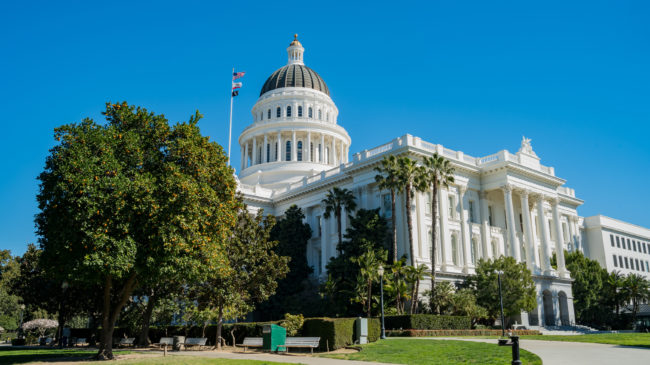Gov. Gavin Newsom’s May Budget revise is the state government’s first attempt to fiscally reckon with California’s suddenly depressed economy. The budget includes some good responses to the coronavirus pandemic and economic downturn but also misses some opportunities to start right-sizing the state’s footprint.
Newsom starts with a sobering estimate of the new budget deficit: $54.3 billion. Because the coronavirus pandemic and the government’s response to it lacks historical precedent, revenue estimates are an exercise in educated guessing right now, but the Newsom administration’s guess seems reasonable to this outside observer.
To the extent that the estimate is politically influenced, there are offsetting incentives to consider. On the one hand, more pessimistic budget estimates mean more politically painful cuts are needed. On the other hand, a bigger deficit could bolster the case for a bigger federal bailout. Indeed, my back of the envelope estimates of the $3 trillion Health and Economic Recovery Omnibus Emergency Solutions (HEROES) Act, which was passed by the House but stalled out in the Senate, suggests that it would’ve delivered $51 billion to California’s state government, almost fully closing the budget hole that Newsom is expecting. But, the Republican-controlled Senate says it won’t pass the HEROES act so assuming that level of federal aid does not materialize in the near-term, Newsom’s May revise offers a combination of budget cuts, revenue enhancements, and rainy day fund drawdowns to offset the full budget gap.
Some of the proposed cuts should be welcomed by fiscal conservatives. For example, the budget includes a 10 percent pay cut for state employees in fiscal 2020-21. With record unemployment and many private-sector employees having their pay reduced, it is not unreasonable to expect the public sector workers to have their pay adjusted as well.
Newsom’s proposal also rolls back some spending increases he originally proposed in January, such as the plan to expand MediCal coverage. It also delays implementation of the California Advancing and Innovating (CalAIM) program, which would’ve provided an array of non-medical services to MediCal beneficiaries.
All told, spending cuts provide only $20.1 billion of Newsom’s $54.3 billion budget-balancing solutions. The remainder of the gap is filled by federal funds, tax hikes, drawing down the state’s reserves, deferring future payments and inter-fund borrowing.
Two proposed tax code changes are expected to raise $4 billion in new revenue in the next fiscal year—a temporary suspension of the ability to deduct one year’s operating losses against another year’s profits and a limitation on the use of tax credits. While these changes are better than tax increases, a recession is not an ideal time for the government to siphon more money from the private sector.
The May budget revise is also bad news for pension solvency. It reverses previous state initiatives to pay down unfunded pension liabilities, which are already estimated to total $167 billion and almost certainly will rise further due to this year’s stock market performance.
Lastly, Newsom expects to empty the state’s rainy day fund, which has $16 billion in reserves, over the next three years to deal with the changing economic forecasts. While these rainy day reserves exist for emergencies just like the one we currently face, other major risks, such as major earthquakes and fires, remain possibilities and need to be planned for by the state.
To better prioritize spending, California should shift to zero-based budgeting, which was pioneered by former President Jimmy Carter, among others. At this time of severely limited resources, the state legislature should ask each department and agency to start at zero and to justify its entire budget and spending plans rather than simply using previous budgets as their baselines. If every program is open to debate and full review, Californians are likely to find some we can live without. The state’s high-speed rail project, for example, might not survive if forced to justify its existence under current circumstances.
“You deserve a leaner government that’s more nimble, more effective, and targets the needs of the most vulnerable,” Gov. Newsom said in discussing his revised budget.
He’s right about that.
A version of this column originally appeared in the Orange County Register.

